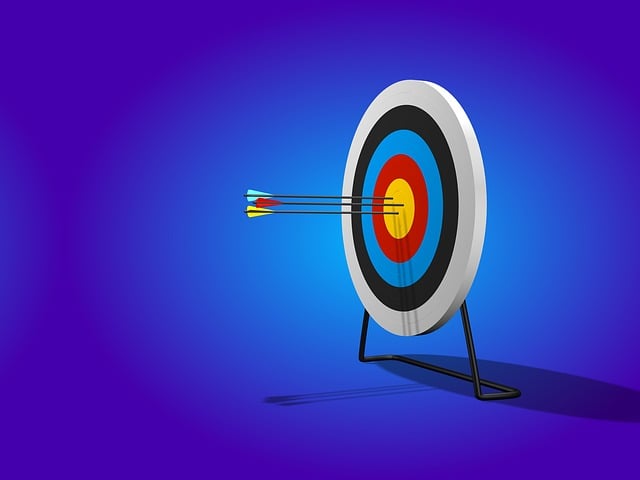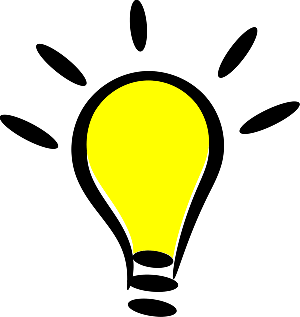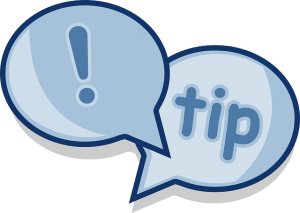Webinars can make a massive impact, influencing people from across the globe, all in real-time. But there's a catch. You can't just hop on a webinar and start rambling about your favorite topic.
In order to keep your audience engaged, build trust, and deliver a clear message, you need to plan, and that's where scripting comes in.
Scripting might sound a bit dull and perhaps even unnecessary. You might be thinking, "Hey, I know my stuff. I'll just wing it." The thing is, even the best speakers in the world use scripts.
A script isn't a chain holding you down; it's a roadmap guiding you through your presentation. It helps you stay on track, ensuring you cover all your key points, and most importantly, it keeps you from getting lost in your own talk.
In this article we're going on a journey to explore the art and science of scripting a webinar. We'll cover everything from understanding your objectives and audience to structuring your webinar and refining your script, plus some tips to keep your audience hooked.
Let's dive in!
Disclosure: Although I receive affiliate compensation at no additional cost to you to support this site that compensation in no way influences my recommendations, which are strictly informed by my 10+ years of online business experience consulting for clients large and small. My aim is to always recommend tools that offer the best return for your investment (for more details, read my Affiliate Disclosure).
Identify Your Webinar Objectives
Before you start jotting down ideas for your webinar, it's crucial to nail down your objectives. What do you want to achieve with this webinar?
Here are a few common webinar objectives and what they might involve:
Educating your audience: You might want to share your knowledge on a particular topic, teach a new skill, or update your audience on the latest trends in your industry. For instance, if you're a digital marketer, you might host a webinar on "The Latest SEO Techniques for 2024."
Selling a product or service: Maybe you've got a new product launch or you want to promote a service. A webinar can be a great platform for this. You can demonstrate your product, explain its benefits, and even answer real-time questions from potential customers.
Establishing authority: If you're looking to position yourself as an expert in your field, a webinar can help you do that. You can share your unique insights, research, or experiences that show you're a thought leader.
Building brand awareness: If you're trying to get your brand name out there, a webinar can help you reach a wider audience. You can talk about your brand's story, values, and what sets it apart from the competition.
Each of these objectives requires a different approach, so it's crucial to be clear on your goals before you start planning your webinar.
Know Your Audience

Understanding your audience is key to creating a webinar that resonates and engages. Here are some things you should know about your audience:
Demographics: This includes age, gender, location, occupation, and education level. These factors can greatly influence your content, presentation style, and even the timing of your webinar.
Interests: What topics are they keen on? What industry news or trends are they following? The more you align your webinar with your audience's interests, the more engaged they'll be.
Pain points: What problems or challenges are your audience facing? If your webinar can provide solutions or advice, you'll have their undivided attention.
Language style: The way you communicate with your audience should match their language style. If they prefer formal language, keep your tone professional. If they're more laid-back, a casual, conversational tone might be more effective.
The more you know about your audience, the better you can tailor your webinar to their needs and preferences.
Create a Compelling Webinar Title
The title of your webinar is the first thing people see, so it needs to catch their attention and make them want to learn more. Here's how you can craft a compelling webinar title:
Make it catchy: Use powerful, action-oriented words. A title like "Master the Art of Public Speaking" is more engaging than "Learn Public Speaking."
Keep it relevant: Your title should accurately reflect the content of your webinar. Misleading titles might get people to sign up, but they won't stay long if the content doesn't deliver what was promised.
Address the audience's needs or pain points: If your webinar is going to solve a problem for your audience, let them know in the title. For instance, "Overcome Your Fear of Public Speaking in 5 Simple Steps."
Use numbers: Titles with numbers often attract attention. For example, "10 Proven Techniques for Successful Public Speaking."
Remember, your title sets the tone for your webinar, so spend time crafting a title that will draw people in and make them excited to attend.
Structure Your Webinar
Creating a well-structured webinar is like preparing a delicious meal. You need the right ingredients, in the right order, and of course, presentation matters. Here's how you can structure your webinar for maximum impact:
Powerful Introduction
Just like how a mouth-watering appetizer sets the tone for a good meal, your introduction sets the stage for your webinar. Your introduction should do three main things:
Grab attention: Start with a strong statement, an interesting statistic, or a compelling question that piques interest.
Establish credibility: Let your audience know why you're qualified to talk about the topic. This could be your experience, credentials, or unique insights you have.
Overview of the webinar: Briefly outline what you'll cover in the webinar. This gives your audience a roadmap of the presentation.
Main Content
This is the main course, the heart of your webinar. This is where you deliver the meaty content. Here's how to structure it:
Break it down: Just like how a large meal is more manageable in smaller portions, break down your content into digestible sections. Each section should cover a specific point or subtopic related to your main topic.
Use headings and subheadings: These act as signposts that guide your audience through your content. They make your content easier to follow and understand.
Include examples and case studies: Real-world examples and case studies can make your content more relatable and easier to understand. They show your audience how your information applies in real-world situations.
Engage with your audience: Regularly interact with your audience to keep them engaged. This could be through questions, polls, or quick exercises.
Solid Conclusion: Just like a satisfying dessert wraps up a good meal, a strong conclusion wraps up your webinar. Your conclusion should:
Summarize the main points
Briefly recap the key points you've covered. This reinforces the information and makes it more memorable.
Call to action: Tell your audience what you want them to do next. This could be to sign up for your newsletter, buy your product, or apply what they've learned.
Q&A: Allow time for questions at the end. This not only clarifies any doubts but also extends your interaction with your audience.
Remember, a well-structured webinar not only makes your content easier to follow, but it also keeps your audience engaged and makes your message more memorable.
Write Your Webinar Script
Now that you've got the structure down, it's time to fill in the blanks with your script. Think of your script as your guide, your roadmap through the webinar. It keeps you on track and ensures you cover all your points. Here's how to go about it:
Keep it conversational: Your webinar isn't a lecture; it's a conversation. Write like you're talking to a friend. Use contractions, informal language, and even a bit of humor if it fits your style.
Use stories and anecdotes: Stories are not just entertaining; they're also memorable. They can help illustrate your points and make your content more relatable. So, share personal experiences, tell success stories, or use hypothetical scenarios to get your points across.
Explain with examples: Examples provide clarity and can make complex topics easier to understand. So, whether you're explaining a concept, a technique, or a process, try to include relevant examples.
Encourage participation: Your webinar should be interactive. Ask questions, encourage comments, and maybe even include a few interactive exercises. This not only keeps your audience engaged but also makes them feel part of the conversation.
Remember, your script is more than just a collection of words. It's a tool to connect with your audience, share your knowledge, and inspire action.
Refine and Practice Your Script

Writing your script is only half the battle. Now comes the refining and practicing part. This is like the rehearsal before the big performance. Here's what you need to do:
Cut the fluff: Go through your script and cut out any unnecessary words or sentences. Your aim should be to convey your message as clearly and concisely as possible.
Simplify the jargon: If you need to use technical terms or industry jargon, make sure to explain them in simple, everyday language. You want to make sure your audience understands your content, regardless of their background or experience level.
Check for flow: Read your script out loud to check for flow. Does it sound natural? Are there any awkward sentences or transitions? Make sure your script sounds conversational and easy to follow.
Practice, practice, practice: The more familiar you are with your script, the more confident you'll be during the webinar. Practice in front of a mirror, record yourself, or rehearse with a friend. The aim is to be so familiar with your script that it feels like second nature.
Remember, a well-written, well-practiced script not only makes you sound professional and confident, but it also makes your webinar more enjoyable and valuable for your audience.
Tips for Making Your Webinar More Engaging
The best webinars are not just informative; they're also engaging. They grab attention, stir curiosity, and stimulate interaction. So, how do you add that extra zing to your webinar? Here are some tips:
Keep it interactive
Making your webinar interactive is like throwing a party where everyone's invited to dance, not just watch from the sidelines. Here's how:
Polls and Surveys: These are great tools to engage your audience. You could use them to gauge their understanding, get their opinion, or even just break the ice. Plus, they give you valuable insights into your audience.
Q&A sessions: Encourage your audience to ask questions. This not only clarifies doubts but also stimulates discussion. It makes your audience feel valued and heard.
Competitions: A small competition or quiz can add an element of fun to your webinar. You could offer a prize for the winner, like a discount on your product, a free consultation, or even just bragging rights.
Use visuals
As the saying goes, a picture is worth a thousand words. Visuals can make your content more understandable, memorable, and engaging. Here's how to use them:
Slides: Use slides to highlight key points, explain complex concepts, or just break the monotony of text. But keep them simple and clutter-free. You don't want your audience squinting to read tiny text.
Infographics: These are great for explaining processes, showing comparisons, or presenting data. They're not only informative but also visually appealing.
Videos: A short video can add a new dimension to your content. It could be a demonstration, an interview, or even a testimonial. But make sure it's relevant and adds value to your content.
Sprinkle in some humor
A bit of humor can lighten the mood and make your webinar more enjoyable. Here's how to use it:
Jokes: A well-timed joke can bring a smile to your audience's face and keep them engaged. But keep it relevant and tasteful. And remember, you're not a stand-up comedian.
Funny anecdotes: A funny personal story or an amusing incident can make your content more relatable and memorable. But keep it short and relevant to your topic.
Remember, an engaging webinar is not just about sharing information; it's about creating an experience. An experience that educates, entertains, and engages your audience. So, go ahead and add that extra spice to your webinar. Your audience will thank you for it.
In Conclusion
Scripting a webinar might seem like a daunting task, especially if you're just starting out. But like any skill, it gets easier the more you do it.
But remember, every great webinar starts with a clear objective, a deep understanding of the audience, a compelling title, and a well-structured script.
And it doesn't stop there. Refining and practicing your script is just as important, and keeping your audience engaged is the cherry on top.
But most importantly, remember to have fun. Yes, webinars are a powerful tool for education and business, but they're also a way to connect with people, share your passion, and maybe even inspire someone.
So, don't get lost in the technicalities. Keep the human element alive. Keep the conversation flowing, the humor sparking, and the passion burning.







